
Reviews > Telescopes > SkyWatcher Esprit 100
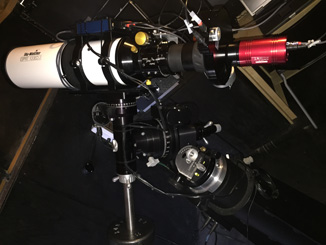
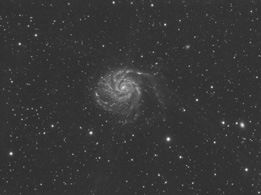
The first telescope I owned was a 60mm Tasco refractor and although it was poor quality, it did hold my interest in astronomy into later life. When I got back into astronomy in my 20s my first imaging telescope was a 5" Maksutov Cassegrain which I kept for a few years before replacing with an 8" Newtonian reflector. At the time I was strongly considering a refractor, but I was swayed by the larger aperture at a much lower price offered by the reflector. That was over 10 years ago, and although the reflector has served me well, I have often wished I could image some of the larger deep sky objects without having to focus solely on a specific central region. So, I spent a couple of years mulling over the vast array of choices available when choosing a 4" apochromatic refractor. I was certain I wanted a high quality instrument and was initially drawn to the Takahashi TSA-120 and Televue NP101is. These are very expensive instruments, and I was somewhat put off by the high cost of all the extra adapters I would need to connect my camera to the OTA. Ultimately I decided instead to purchase a SkyWatcher Esprit 100 after having read many reviews in its favour. After all, with the UK seeing it's unlikely I'd be able to tell the difference between images taken with any of these scopes on an average night. I'll admit to being a little deterred by the SkyWatcher quality control as I've heard many reports of telescopes arriving out of collimation or faulty. For this reason I decided to purchase from FLO in the UK, opting for the extra optical bench-test for added piece of mind. As part of the purchase I asked FLO to replace the focuser with a 3" FeatherTouch (part number A30-1903-102), along with the appropriate adapter and endcap. Most reviews I had read suggested the stock focuser is perfectly adequate, but I wanted to err on the side of caution and replace it anyway. I also purchased the dedicated Esprit 100 field flattener as I was keen to have the bench-test carried out after the focuser replacement and with the flattener in place.
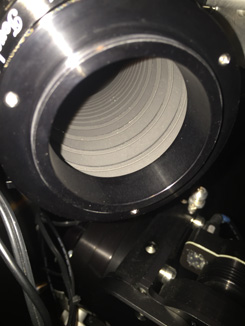
Since the order was placed during the Covid-19 pandemic, I needed to wait longer than normal as the FeatherTouch focuser was expected to take 3 months to arrive. After two months a batch of Esprit 100 telescopes arrived from China, but all were found to be faulty by FLO and returned. My wait continued until about 7 months after placing my order a new batch arrived. FLO replaced the stock focuser and carried out the optical bench-test before shipping to my home address. I wasn't particularly pleased when the DPD driver dropped the box from chest height onto the floor outside my front door before ringing the doorbell. The box was even marked "Fragile: Do not drop". I noticed the cardboard box was also wet and damaged in places, signs that the journey hadn't been particularly gentle. After opening the boxes I set about making sure everything was present and correct and was happy to discover that nothing was missing and the contents were all unharmed. SkyWatcher provide a very robust carrying case with blue "tennis balls" used to keep the scope in place within the box to help reduce the effects of bumps and knock in transit. I did notice that the Esprit 100 with the FeatherTouch focuser upgrade increases the length of the OTA to the point where some of these balls need to be removed for it to fit properly. This wouldn't be an issue with the stock focuser however.
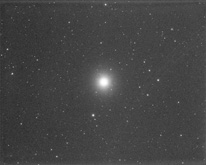
My first concern was what appeared to be a very fine crack in the SkyWatcher field flattener. I contacted FLO, sending images of the "crack" and they arranged for it to be returned and checked. However, as I was about to package it up ready to be returned I inspected again very closely and discovered that it wasn't a crack at all but a very fine piece of what looked like a strand from a hot glue gun. It didn't remove particularly easy, but did rub off using a lens cleaning cloth.
I didn't have to wait more than a day or two before I had my first clear night and was able to attempt my first star test. I say attempt as I quickly discovered that I was unable to reach focus with the FeatherTouch focuser. The model bought (part number A30-1903-102) has only 38mm of focus travel and I was able to determine that I'd need 87mm to reach focus. I needed to purchase an extension tube which needed to be placed between the focuser and the corrector to avoid changing the distance between the corrector and the camera which has to be 63mm to function properly. Trying to find any extension tubes with M65 threads was a real challenge and the only options were to have one custom made (at considerable expense) by either Precise Parts in the US or Teleskop Express in Germany. In the end I found an online retailer in China (Cnscope)which had some M65 extension tubes ready-made which could be purchased in several convenient lengths. I calculated that I'd need an extension tube 68mm in length to put the focuser at the mid-point of its 38mm of travel. I purchased a 30mm and 39mm adapter which should have put me just 1mm over which would have been perfect. Delivery of these adapters took about 10 days, though I discovered they weren't actually the advertised dimensions. Fortunately this didn't matter as the two adapters I purchased when combined gave an overall length of 66mm, which mean the focuser would still be very close to the mid-point of its travel to reach focus. I needed some travel in either direction for auto-focus V curves to work.
After confirming I could reach focus with the adapters I waited for another clear night to carry out some basic testing to confirm that the optics were satisfactory. I didn't have to wait long, and although my basic testing was only with a DSLR on an unpowered mount, the images didn't show any obvious optical issues and stars appeared nicely round across the whole image. A few days later I removed my old 8" reflector from the mount and replaced it with the Esprit 100, carefully balancing the whole setup and routing the cables as neatly as I could. As luck would have it, that evening was clear so I carried out the first proper round of testing.
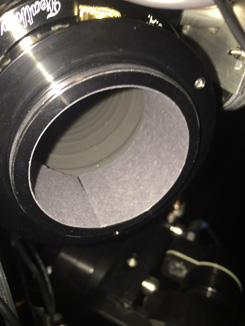
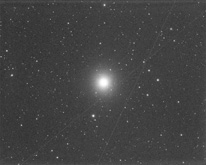
After confirming that the new settings for plate-solving, PHD guiding and auto-focus were all working I started collecting 4 minute luminance subs of M101. I used my Atik 460 with the EFW2 filter wheel and a ZWO OAG and collected 21 subs before calling it a night. On the evening I was happy to confirm that the stars were round across the whole image without any signs of optical aberrations. It wasn't until the following day when I stacked the images that I discovered a problem. There were two faint arcs on the image which were almost invisible in individual subs. Over the next few days I carried out a series of tests trying to work out what was causing these arcs. I was unable to reproduce the problem in the day time as the arcs didn't appear on either darks or flats, and I couldn't find any way to show them on daytime targets. I used the bright star Merak for further testing and this displayed only a single faint arc on the image. I was able to rule out stray lights cast onto the scope as the cause, and realised that the most likely cause was stars off-axis reflecting off an internal curved surface in the OTA. When I shone a torch through the objective and eyeballed up the tube without the camera in place I noticed that by far the most reflective surface was the inner edge of the FeatherTouch focuser endcap. The focuser itself is very well baffled, but the endcap is a shiny black anodised surface. The next clear night I took several test images of Merak to confirm the problem was still present in a stack (as the arc was too faint to see on individual subs here too). I then placed a piece of matt black card inside the focuser endcap to see if this made a difference. I was very pleased to discover that this removed the arc completely! I plan to replace the matt black card with flocking material as a permanent solution.
After resolving the arc problem I carried out my final tests by capturing a full set of luminance and colour data on M101. The only test that remained was to confirm that the optics didn't suffer from unexpected amounts of chromatic aberration. This test passed with flying colours (well, the colours were where they should be and there was no detectable chromatic aberration). Since then I have also imaged M3 and again found the scope to perform admirably. After imaging at 900mm with the reflector, it's almost a walk in the park imaging at 550mm, and so refreshing to have nice round stars across the whole image. So far this scope is a real keeper and I look forward to tackling targets such as M31 and M45 later in the year and also nebulae with narrowband filters.